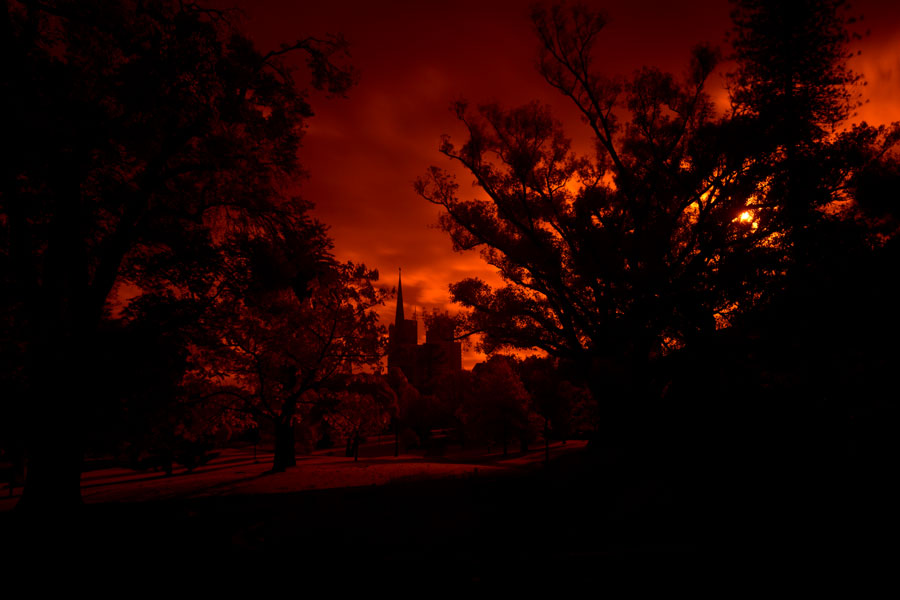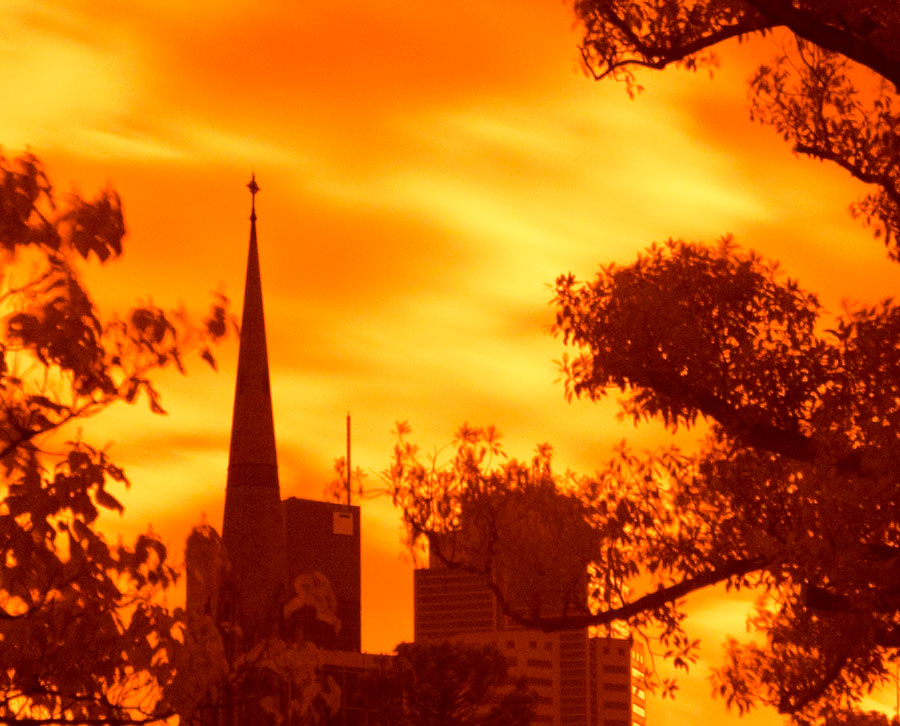Here I present the initial test results of shooting infrared with a Sony a77 dSLR camera, using a Hoya R72 IR filter.
The Sony is a nice camera for shooting IR, with the tilting screen.
Leaving the camera in Program mode it gave an exposure of 20 seconds, f5.6 and 100ISO in a part cloudy situation but with much of the view in full, though late in the day, sun. You can see the unprocessed result below:
By doing Levels in Photoshop produces a better result:
Lastly a return to Adobe Camera RAW to adjust the settings produces the image below:
If we examine the individual colour channels of this time you can see that the Sony a77 gives a vastly different exposure to the three channels, suggesting the blue filter on the sensor cuts out much deeper into the infrared than I have found common on most cameras recently.



I next switched to manual mode, which I generally prefer for infrared photography with most unconverted cameras. The reason for this is that the metering sensors in most cameras do not have an IR blocking filter, unlike the imaging sensor. Thus the camera always under-exposes in any auto exposure mode.
In manual I tried f4.5, 30 seconds and 100ISO. The lens in these shots in the Sony 11-18mm f4.5 lens:
and switching to 800ISO:
giving a much better result.
Below is a 100% section from the centre of the image so we can just image noise:
We can see noise but it is not too bad considering the ISO and length of the exposure. There was no noise reduction done in ACR.
Switching to the Sony 16-50mm f2.8 lens, here is a shot at f2.8, 30 seconds and 100ISO:
and the individual colour channels:



Again these show the substantial exposure difference between the channels. This means that if you are shooting to do a mono conversion from just one channel you will need to make substantial exposure changes depending on the channel you intend to use.
Below is another shot, this time done at f2.8, 30 seconds and 100ISO:
and a 100% centre section so you can judge noise:
Lastly here is a monochrome image produced from the red channel only after adjustments in ACR:
While this was only initial testing and I will follow up with a full infrared review shortly, I found the a77 to be quite suitable for infrared photography.
Another article, First Shots With The Sony a77 dSLR can be viewed here.










Great write-up! Thanks.
BTW, I wonder how much IR filtering the Translucent mirror contributes?
I’m not brave enough, but there is someone who’s replaced his mirror with saran wrap of all things.
http://www.pcworld.com/article/247104/photographer_replaces_his_dslrs_translucent_mirror_with_saran_wrap.html
Unfortunately, the camera’s lens will not fit with the mirror in the up position since that would be a simple way to see how much blue/ir filtering it contributes.
You might do a single test ISO 50. There’s some recent discussions about how well the Sony A77 performs with this setting.
http://visualsciencelab.blogspot.co.uk/2012/05/forget-iso-25000-im-loving-what-im.html
Will do. Stay tuned.
in infrared sky be black and leafs are white, so is not infrared
Actually with digital infrared images are never usually black and white as they come from the camera. They require some processing always.
Hello Wayne,
Thank you for the information on infrared photography and Sony’s a77 camera. After reading your test results I’ve decided to purchase an infrared filter for my Sony a77.
Can you tell me how you went about establishing a starting expurse point? Was that just an educated guess on your part or did you use the camera to arrive at the settings you used?
Thanks!
Jim
Set the camera up on a tripod pointing at a reasonable varied scene, in good sunlight. Put the camera on manual and take a shot at 15 seconds and aperture wide open. Look at the image and turn on histograms on the display. Adjust from there till the histogram is as far to the right (over exposure) as possible without clipping. That’s your exposure point. Then in Photoshop (or similar) you will adjust the images to monochrome (or false colour) and adjust the exposure to give a pleasing placement of tone.
Thaks for the info Wayne, I appreciate it very much.
Jim
Pleasure